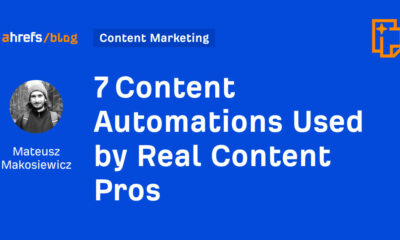Let’s say you work in martech for a large, well-known enterprise. It’s a global firm, a recognized brand. Ideally, you’d want to follow a structured, test-based approach for how you bring new technology into the enterprise, and you’d expect participating vendors to follow your lead in the vetting process — out of respect, if nothing else.
Well, reality can prove itself quite different. In Real Story Group’s role as a buyer’s advocate for martech stack leaders, we’ve noticed a recurring trend where larger software companies often disrupt well-reasoned martech selection strategies through aggressive and frequently questionable tactics.
Of course, none of this is new, and perhaps vendor bullying today is more subtle than in years past — but it remains just as persistent.
A typical scenario
Imagine this scenario: You and your team go through a proper technology selection process. You do everything right. Your team comes to an educated consensus decision. Based on empirical testing, you are on the verge of selecting a platform not sold by one of the big vendors. However, these big vendors are aggressive, publicly-traded companies, not used to getting turned down.
So they approach a board member or senior exec at your firm, trying for an end-around your process. Unfortunately, there’s a long history in software sales of “selling up the chain.” Back in the day, this meant deals on the golf course; more recently, it’s cajoling over lunch, at executive councils, and boardroom get-togethers.
Now it might seem anachronistic to talk about a supplier bullying a customer. As the buyer, don’t you have power in this situation? But that’s just the point. Large martech vendors employ specific methods to disempower enterprise selection teams.
How it works
Here’s what I often see:
- High-ranking executives from the major software vendor demand a meeting with your boss’s boss or a C-level executive. Given that this vendor may work with other parts of your enterprise and everyone wants to maintain this relationship, they typically get the meeting. Or they have already networked with your leadership at industry events.
- The vendor touts traditional, one-size-fits-all analyst rankings to prove they are “a leader.” If you select anyone other than a leader, it means a risk to the customer’s business (and, by implication, valuations and careers).
- They belittle the enterprise selection team: “They’re not strategically thinking like you need to do…”
- They belittle the selection process: “They got lost in the weeds and focused too much on functionality.” (This is a particularly ugly allegation because the most bully-prone vendors tend to carry the most technical debt, so they often want to avoid test-based selection processes.)
If all else fails, the vendor may dramatically slash their pricing at the last minute as a defensive move or even give something away cheaply or for free. This isn’t exactly bullying, but it warps the process for sure. Just remember, technology is never truly free.
A tale of two enterprises
Recently, I’ve witnessed two dramatically different outcomes to these tactics taken by one of the most notorious of these vendors. (If you’re an RSG subscriber, contact me to hear the gory details.)
The vendor bullied Enterprise #1 into selecting an ill-fitting solution against the wishes of an interdepartmental selection team, persuading a senior executive sponsor that only that vendor’s array of platform offerings would prove robust enough. The implementation was so difficult and expensive that it did not launch after two years. They’re now engaged in a multi-million dollar lawsuit.
Enterprise #2 said no to the same bully. The alternative system they selected has recently launched, and while no technology is perfect, the reception has been positive so far. The losing vendor’s calls and threats haven’t stopped completely. But when questions come from upper management, because the process was grounded in user-centered design thinking, the activation team can prove that their choice will lead to the best adoption and drive better business value.
Ultimately the fate of your enterprise is often going to depend on the strength of your leadership and, by extension, your ability to connect your decision to strategic business objectives. If you can cast your decision in terms of key metrics you’re trying to move, it becomes less susceptible to outside manipulation.
What you should do
First, recognize that often the biggest martech vendors carry the biggest risks. That doesn’t mean you should avoid the über-players in these markets, but it does mean you have to prepare for them to try to bulldoze over you should you not tip things their way.
Since the bullying is real – and so are the long-term consequences of making bad technology decisions – you need to give your team and leadership the ammunition to push back. Let me know if I can help. In the meantime, feel free to share your experience with this phenomenon via the hashtag #VendorBullied on LinkedIn or Twitter.
Real Story on MarTech is presented through a partnership between MarTech and Real Story Group, a vendor-agnostic research and advisory organization that helps enterprises make better marketing technology stack and platform selection decisions.
Opinions expressed in this article are those of the guest author and not necessarily MarTech. Staff authors are listed here.





















You must be logged in to post a comment Login